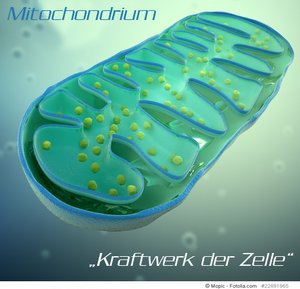Referenzen / Wissenschaftliche Quellen

Bitte entschuldigen, dass die folgenden Angaben zu den Referenzen und wissenschaftlichen Quellen derzeit leider nur auf englisch zur Verfügung stehen:
I have read the following german books which are the references for all information published on this website:
- „Mitochondrien: Symptome, Diagnose und Therapie“ from Dr. Kuklinski (more than 500 pages)
- „Mitochondrientherapie – die Alternative“ from Dr. Kuklinski
- „Elemente der Gesundheit“
- „Chronische Erkrankungen erfolgreich behandeln“
and many more!
U.S. National Library of Medicine (NIH): Genetics Home Reference (Your Guide to Understanding Genetic Conditions):
Can changes in mitochondrial DNA affect health and development?: The quadrillion mitochondria in the cells of women (and men) have their own DNA (known as mitochondrial DNA or mtDNA), the human mitochondrial genome has 37 (to 39) genes.
I searched several gene databases in the US.
Scientific sources for mitochondrial diseases and the gene defect/hereditary predisposition of lipedema / lipoedema:
1. Lipedema, Term ID 6457!) in the US-Gendatabase at „MSeqDR ~ Accelerating Genomic Discovery in Mitochondrial Diseases“ https://mseqdr.org
MSeqDR Mitochondrial Disease pathogenic mutation variant.: at the moment no mitochondrial gen(s) named as a cause for lipedema: research is done by St. Georg College of London until 2.2018
2. Gene NSD1: Lipedema or lipoedema is a chronic disorder of adipose tissue: An important gene associated with Lipedema is NSD1 (nuclear receptor binding SET domain protein)
(look at Wikipedia about Autosome)
3. orphanet: The portal for rare diseases
lipedema ORPHA77243: rare genetic skin disease,
subcutaneous, genetic tissue disease,
4. MalaCards Human Disease Database: Lipedema malady –
Global: Rare diseases,
Anatomical: Cardiovascular diseases, Skin diseases categories
ICD10: Endocrine, nutritional and metabolic diseases
Obesity and other hyperalimentation
Localized adiposity
Orphanet: 48
Rare circulatory system diseases – Rare skin diseases
5. National Center for Advancing Translational Sciences ORDR
Office of Rare Diseases Research Genetic and Rare Diseases Information Center (GARD): * Not a rare disease: affecting up to 11% of women after puberty
6. orphanet/INSERM (Institut National de la Santé et de la Recherche Médicale), the reference portal for information on rare diseases and orphan drugs:
Orphanet classification of genetic diseases
http://www.orpha.net/consor/cgi-bin/Disease_Classif.php?lng=DE&data_id=156&PatId=11100&search=Disease_Classif_Simple&new=1
genetic disease ORPHA98053
Skin disease, rare genetic ORPHA68346
Tissue disease, subcutaneous, genetic ORPHA183484
Lipedema ORPHA77243
7. Kind, AH, Gordon, KD, Sharpe, P., Brice, G., Ostergaard, P., Jeffery, S., Mortimer, PS Lipedema: an inherited condition. Am. J. Med. Genet. 152A: 970-976, 2010. [PubMed: 20358611, US National Library of Medicine National Institutes of Health]
8. C17.300.451 (Skin and Connective Tissue Diseases) Lipedema
National Library of Medicine
9. Johns Hopkins University OMIM: Lipedema
The most extensive database for mitochondrial genetics is the MITOMAP database of Emory University (USA):
10. MITOMAP: A human mitochondrial genome database. http://www.mitomap.org, 2016. A compendium of polymorphisms and mutations in human mitochondrial DNA.
11. OMIM® Online Mendelian Inheritance in Man®: LIPEDEMA
An Online Catalog of Human Genes and Genetic Disorders
50 years OMIM Human Genetics Knowledge for the World
12. Homo sapiens / Human mitochondrial revised cambridge reference sequence (rCRS)
13. SCIENCE: 05 MARCH 1999, VOL 283, ISSUE 5407, Special Issue Mitochondria:
http://science.sciencemag.org/content/283/5407
14. Human mitochondrial DNA encodes 37 gene products (13 proteins, 2 rRNAs and 22 tRNAs) over 16,569 base pairs. All its encoded proteins are directly involved in oxidative phosphorylation and include components
of:
— complex I (NADH dehydrogenase subunits ND1, ND2, ND3, ND4, ND4L, ND5, ND6),
— complex III (cytochrome b),
— complex IV (cytochrome oxidase subunits I, II and III)
— complex V (mitochondrial ATPase subunits 6 and 8)
in which of this genes lies the real cause of lipedema?
15. mtDB – Human Mitochondrial Genome Database
www.mtdb.igp.uu.se
Best regards
Yours
Dagmar Schmidt-Neuhaus
mitochondriopathien.de
Publisher and Researcher
Winner of the GERMAN MEDICAL AWARD 2021
Nominated for the Bavarian Health and Care Price 2017
Postal adress:
Schmidt-Neuhaus | Publizistik
Ludwigstraße 9
D 83646 Bad Tölz
GERMANY / Europe
Phone: +49 (0)172 / 861 33 03
Email: info@mitochondriopathien.de
Lipedema – the mostly unknown disease at women, a heriditary mitochondrial disfunction?
Keep in mind: Lipedema almost exclusively at women is NOT a rare disease (more than about 17 million women in the US suffering from the adipose disorder), but the diagnosis is rarely made! This has to be changed!
After more than five years intensive research I might have found some deeper cause for LIPEDEMA: it might be an disorder in the mtDNA in the quadrillion (!) mitochondria (round about 45.000.000.000.000.000 and up to 60.000.000.000.000.000!) of the cells or fat cells at women and damaged mitochondria tend to proliferate more and faster than healthy ones.
Deutscher Hinweis zu LIPÖDEM – der weitgehend unbekannten Volkskrankheit bei Mädchen ab der Pubertät und Frauen:
An der St. George’s University of London (Pia Ostergaard (PhD), Project: „Genetic Analysis of Lipoedema“) startete März 2016 eine wissenschaftliche Untersuchung von LIPÖDEM, um die genetischen Ursachen zu identifizieren, diese dauert 2 Jahre.
Komplementärmediziner, die sich mit der Besonderen Untersuchungs- und Behandlungsmethode Mitochondriale Medizin (keine Ärztekammer-Qualifikation) beschäftigen, geben an, dass bei Lipödem ein Energieverlust IN den Zellen (oder Fettzellen) vorliegt, Lipödem also eine vererbte Mitochondriopathie sei.
Hieraus ergeben sich natürlich ganz neue Therapien, nämlich die Multimodale Mitochondrientherapie neben Fettabsaugungen (Liposuktionen)!
Es bedarf weiterer umfangreicher wissenschaftlicher Untersuchungen mit einer großen Patientinnen-Zahl zur Erkennung der genauen Genmutationen eines oder mehrerer der 37 Gene der mtDNA in den Billiarden Mitochondrien IN den Zellen (grob geschätzt ca. 45.000.000.000.000.000 bis weit über 60.000.000.000.000.000!), ebenso zu den innovativen Behandlungsmöglichkeiten dieser mitochondrialen (?) Erkrankung bei Frauen, um die kausalen Behandlungsmethoden für diese Volkskrankheit bei Frauen endlich zu finden.